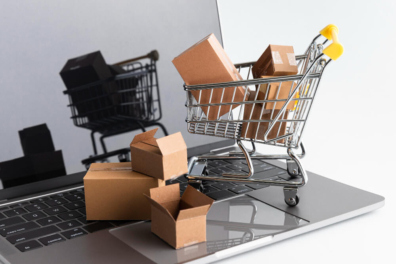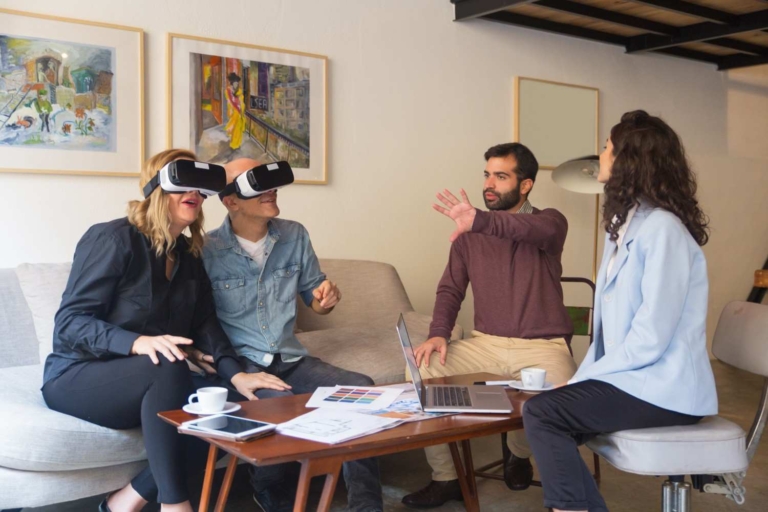Greetings! I'm Aneesh Sreedharan, CEO of 2Hats Logic Solutions. At 2Hats Logic Solutions, we are dedicated to providing technical expertise and resolving your concerns in the world of technology. Our blog page serves as a resource where we share insights and experiences, offering valuable perspectives on your queries.

Headless commerce in 2025 has transformed from an emerging approach to an essential strategy, with five key developments driving adoption: AI-powered personalization engines now deliver personalized experiences across all touchpoints; composable commerce has become accessible to mid-market businesses through standardized components; commerce experiences are embedding seamlessly into everyday environments through smart devices and AR/VR. These advancements collectively enable businesses to create more flexible, performant, and customer-centric digital commerce experiences in an increasingly competitive marketplace.
Ever felt like your ecommerce platform is holding you back rather than propelling you forward? You’re not alone.
As we navigate through 2025, headless commerce has evolved from a cutting-edge approach to an essential strategy for brands seeking flexibility, performance, and competitive advantage.
At 2HatsLogic, we’ve helped dozens of forward-thinking companies transform their digital commerce operations.
Let’s explore the trends that are reshaping the headless commerce landscape this year.
The Headless Revolution: Where We Stand in 2025
Headless commerce has matured significantly, moving beyond the experimental phase to become a mainstream approach for digital commerce.
The core principle remains unchanged, separating the frontend presentation layer from the backend commerce functionality.
The implementations and surrounding ecosystem have evolved dramatically.
1. AI-Powered Personalization Reaches New Heights

In 2025, AI integration with headless commerce platforms has reached unprecedented sophistication.
We’re now seeing systems that don’t just recommend products but orchestrate entire customer journeys across multiple touchpoints.
What’s Changed:
- Real-time context awareness across devices and channels
- Predictive inventory management based on personalization data
- Emotional intelligence algorithms that detect and respond to shopper sentiment
Implementation Example:
One of our clients, a mid-sized fashion retailer, implemented an AI-driven personalization engine that works across their website, mobile app, and in-store kiosks.
The system uses a unified customer data platform connected to their headless commerce backend via APIs.
The results? A 34% increase in average order value and a 28% improvement in customer retention rates within just three months.
Ready to harness AI-powered personalization for your business?
Key Integration Requirements:
| Component | Role | Implementation Complexity |
|---|---|---|
| Customer Data Platform | Unified customer profile management | Moderate |
| AI Personalization Engine | Decision-making and recommendation | High |
| API Management | Seamless data flow between systems | Moderate |
Pro-Tip: When implementing AI-powered personalization, start with one high-impact customer journey rather than trying to personalize everything at once. This focused approach allows you to measure results clearly and refine your strategy before scaling.
2. Composable Commerce Goes Mainstream
The concept of composable commerce, selecting best-of-breed components for your tech stack, has fully matured in 2025.
MACH architecture (Microservices, API-first, Cloud-native, and Headless) has become the gold standard for enterprise commerce implementations.
What’s truly exciting is how the barrier to entry has lowered. Composable commerce is no longer just for enterprise giants with massive IT teams.
What’s Driving Adoption:
- Pre-integrated commerce components with standardized APIs
- Low-code integration platforms specifically for headless commerce
- Emergence of specialized implementation partners (like us at 2HatsLogic!)
By adopting a composable approach with carefully selected components, they achieved:
- 67% faster time-to-market for new features
- 42% reduction in total cost of ownership
- Ability to quickly pivot their business model when supply chain challenges emerged
3. Omnichannel Evolution: The Rise of Ambient Commerce
In 2025, “omnichannel” has evolved beyond simply connecting online and offline experiences.
We’re now entering the era of ambient commerce, where shopping experiences are embedded seamlessly into everyday environments and activities.
Headless architecture is the essential foundation for ambient commerce, as it allows commerce functionality to be integrated into virtually any touchpoint or device.
Emerging Touchpoints:
- Smart home devices, from refrigerators to mirrors
- Connected vehicles and autonomous transport
- AR/VR experiences in physical spaces
- Social spaces and collaborative shopping environments
Real-World Application:
A furniture retailer we worked with implemented an AR-powered room visualization tool that works across their website, mobile app, and in-store kiosks.
Shoppers can visualize furniture stores in their actual living spaces, save designs, and continue their shopping journey across any channel.

The headless backend ensures that product data, inventory, pricing, and the customer’s saved designs are consistent regardless of where they engage.
Want to create seamless omnichannel experiences for your customers?
4. Performance Optimization at the Edge
Edge computing has transformed headless commerce performance in 2025. We’re now seeing sophisticated commerce functionality deployed at the edge, drastically reducing latency and improving the customer experience.
Key Edge Computing Applications:
- Localized inventory availability calculations
- Personalized content and product recommendations
- Complex pricing rules and promotions
- Fraud detection and prevention
By moving these functions closer to the user, headless commerce platforms are delivering sub-second page loads and instant interactivity. Even with complex applications.
Practical Implementation:
One of our retail clients implemented edge-deployed product recommendation algorithms that reduced latency by 78% while simultaneously handling 3x more complex personalization rules.
Their approach involves:
- Strategic data distribution across global edge locations
- Intelligent caching strategies for various data types
- Synchronization protocols to maintain data consistency
- Fallback mechanisms for reliability
Pro-Tip: When implementing edge computing for headless commerce, create a clear data classification strategy that identifies which components need real-time consistency versus those that can tolerate eventual consistency.
5. Headless Payment Innovation
Payment technology has seen revolutionary changes in the headless commerce ecosystem.
In 2025, payment is no longer just a transaction. It’s an integral part of the customer experience that can be customized and optimized.
Emerging Payment Trends:
- Embedded finance options throughout the shopping journey
- Contextual payment method suggestions
- Single-click checkout across any device or channel
- Cryptocurrency and alternative payment integrations
The headless approach allows merchants to rapidly integrate new payment methods and experiments without disrupting their core commerce platform.
Ready to transform your payment experience with headless commerce?
The Future of Headless: Integrated Experiences
As we look beyond 2025, the next frontier for headless commerce is truly integrated experiences that blur the lines between shopping, entertainment, education, and community.
The technical foundation for this integration? You guessed it, headless architecture that allows commerce functionality to be embedded anywhere.
Implementation Roadmap for 2025
If you’re considering a headless commerce implementation in 2025, here’s a strategic roadmap based on our experience working with dozens of successful clients:
- Assessment (2-4 weeks)
- Evaluate current architecture and identify constraints
- Define business goals and priority use cases
- Build ROI model and success metrics
- Architecture Design (4-6 weeks)
- Select core commerce platform and complementary services
- Design API strategy and integration patterns
- Establish performance benchmarks and scaling strategy
- Implementation Phase 1 (8-12 weeks)
- Build core commerce functionality
- Develop initial frontend experiences
- Establish CI/CD pipelines and testing automation
- Implementation Phase 2 (8-12 weeks)
- Integrate specialized services (search, personalization, etc.)
- Implement advanced features and optimizations
- Comprehensive testing and performance tuning
- Launch and Optimization (Ongoing)
- Phased rollout strategy
- Performance monitoring and optimization
- Continuous improvement and feature expansion
Ready to start your headless commerce journey?
Conclusion: Taking Action in 2025
Headless commerce has reached a maturity level that makes it accessible and beneficial for a wide range of businesses.
At 2HatsLogic, we’ve helped businesses of all sizes navigate their headless commerce journeys. From strategy and architecture to implementation and optimization, our team brings the expertise needed to succeed in this rapidly evolving landscape.
Explore how headless commerce can transform your business in 2025. Contact us today to schedule a consultation and discover the possibilities.
FAQ
Is headless commerce only suitable for large enterprises?
No! While early headless commerce adopters were primarily large enterprises, the ecosystem has matured significantly. Today, businesses of all sizes can benefit from headless approaches, especially with the emergence of specialized implementation partners who can manage the technical complexity.
How does headless commerce impact my marketing team's workflows?
Initially, there may be an adjustment period as teams adapt to new tools and workflows. However, most marketing teams ultimately report greater flexibility and creative freedom once they've mastered their new headless-compatible CMS and experience management tools.

Related Articles






